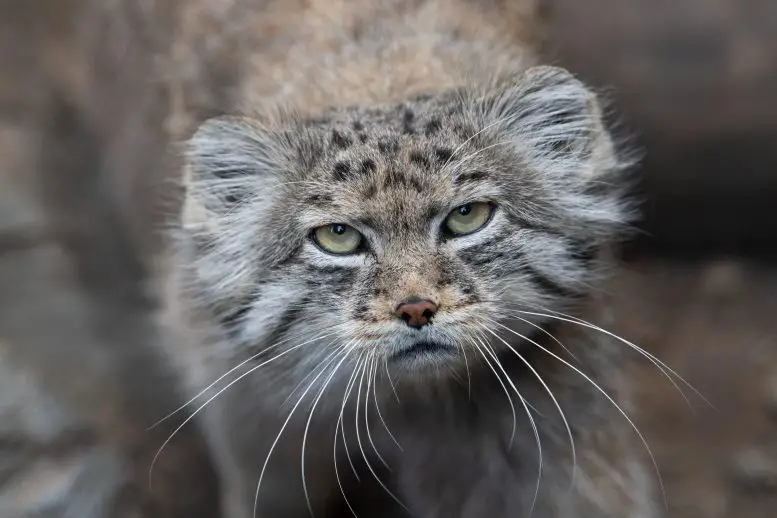Cats have become some of the world’s most aggressive predators
- December 5, 2024
- 0
When considering the causes of species extinction, invasive species such as mice or snakes and the threat of climate change often come to mind. But at the top
When considering the causes of species extinction, invasive species such as mice or snakes and the threat of climate change often come to mind. But at the top

When considering the causes of species extinction, invasive species such as mice or snakes and the threat of climate change often come to mind. But at the top of the list of culprits is an unlikely rival: domestic cats. While cats may seem like gentle and lovable companions, their impact on ecosystems around the world reveals a much more destructive side. Behind their fascinating appearance hides one of the most effective predators in nature: sneaky, adaptable and ruthless.
When a cat moves with quiet determination, it’s likely approaching its next prey. Having no particular preferences and an insatiable hunting instinct, cats, both domestic and wild, have caused the extinction of many species and earned the title of one of the most aggressive predators in the world.
According to a study published in Proceedings of the National Academy of Sciences As of July 2016, cats have contributed to the extinction of 63 species in modern times. Recent research has shed further light on the staggering extent of their environmental impact. In December 2023 research Nature Communication documented more than 2,000 species preyed upon by cats.
Of these, 347 species are classified as threatened or endangered by the International Union for Conservation of Nature (IUCN). Cats do not show any predilection when it comes to hunting, but their preferred target seems to be birds.
In the United States alone, cats, both domestic and feral, are responsible for the deaths of an estimated 2.4 billion birds and 12.3 billion small mammals each year. In Australia, feral cats kill more than two billion native animals every year, including marsupials, reptiles and land birds. Of the 2,084 species hunted by cats, 981 top the list, followed by 463 reptile species. Notable examples of their devastating effects include the Stevens Island wren, the extinct Hawaiian crow, and the New Zealand quail, which were wiped out by a single domestic cat named Tibbles. Even today, feral cats remain a major threat to endangered species such as the Galapagos bird.
Cats damage both mainland and island ecosystems, but the damage they cause varies greatly. The islands are particularly vulnerable due to the lack of natural predators and the fact that native species have evolved without protection from invasive predators. Ground-nesting birds, slow-moving reptiles and small mammals are particularly at risk on islands.
The emergence of cats, the main predators in such environments, led to a sharp decrease in the population and its complete extinction. There are three times more cat species on the islands than on the mainland. On the mainland, the influence of cats is more sensitive. Cats still use fragmented habitats in urban and suburban areas, while vast expanses of land often support local predators and competitors.
They prey on small mammals and birds in already stressed ecosystems, disrupting food chains and sometimes outcompeting native predators. But the diversity of competitors and predators on the mainland somewhat mitigates their impact compared to the devastation seen on the islands.
The ability of cats to spread and evolve as invasive predators is due to a combination of biological characteristics and human support:
A single female cat can give birth to up to 180 kittens in her lifetime under ideal conditions; This allows wild populations to grow rapidly in areas where there is abundant food and few predators.
Equipped with sharp claws, keen night vision, sharp hearing, and razor-sharp teeth, cats are adept at hunting a variety of prey, including birds, rodents, reptiles, and insects.
Cats rely solely on animal protein, allowing them to survive solely at the expense of prey. Their evolutionary ability to obtain water from their meaty diet allows them to thrive in a variety of environments.
Cats use stealth and ambush tactics to outsmart their prey; They show extraordinary patience and persistence when hunting even elusive or cautious species.
Unlike other invasive predators, cats take direct advantage of humans. Feral cats often rely on food scraps, garbage, or intentional feeding, which protects them from natural selection pressures such as starvation. Meanwhile, even well-fed domestic cats are hunted for sport, increasing their environmental impact.
Cat population control efforts, such as sterilization and return (TNR) programs, aim to reduce the number of feral cats without eliminating them completely. But cats’ adaptability and widespread distribution on every continent except Antarctica means their ecological impact continues. Balancing many people’s love for cats with the urgent need to protect fragile wildlife is an ongoing challenge.
While cats remain beloved companions of millions of people, their role as one of the most destructive invasive species underscores the need for responsible management. Protecting ecosystems from predators is not just a choice, it is an ecological imperative.
Source: Port Altele
As an experienced journalist and author, Mary has been reporting on the latest news and trends for over 5 years. With a passion for uncovering the stories behind the headlines, Mary has earned a reputation as a trusted voice in the world of journalism. Her writing style is insightful, engaging and thought-provoking, as she takes a deep dive into the most pressing issues of our time.